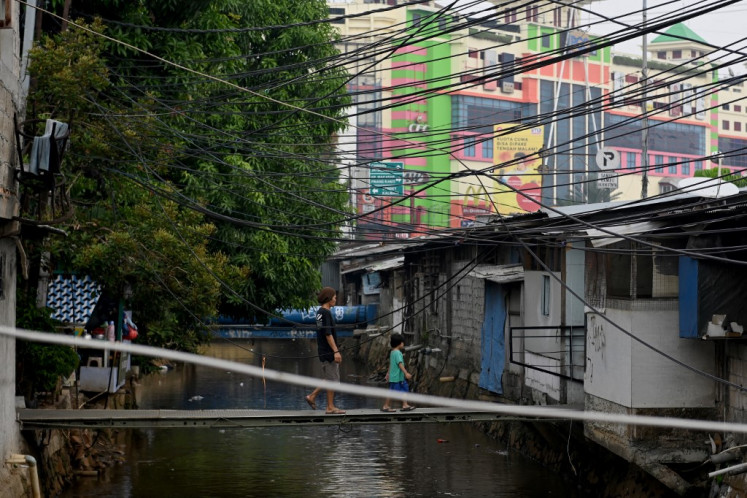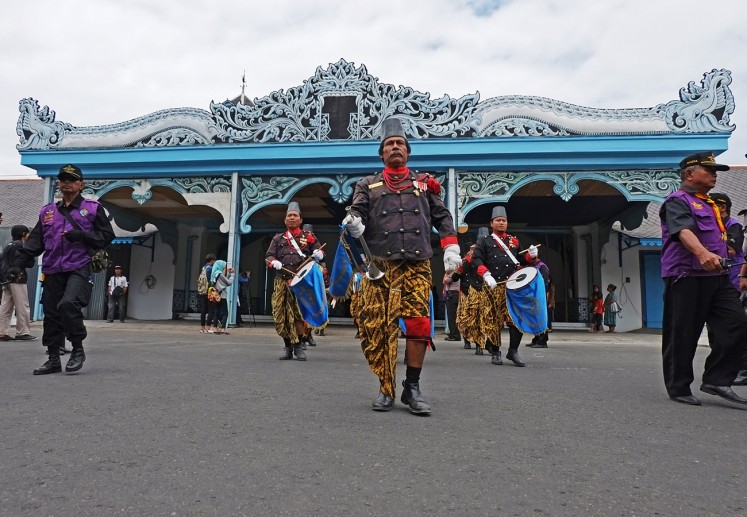‘Jaji’ A chronicle of solidarity
Home: Javanese-Surinamese people still mostly live in old houses given by then-Dutch companies to their predecessors
Change text size
Gift Premium Articles
to Anyone

Home: Javanese-Surinamese people still mostly live in old houses given by then-Dutch companies to their predecessors.
More than 125 years ago, the first wave of Javanese slaves arrived in Suriname from the then Dutch East Indies.
Since their arrival, generations of Javanese forced labor played a major role in Suriname’s society.
Numerous Javanese descendants have become prominent figures, such as politician William “Willy” Soemita, award-winning novelist Karin Amatmoekrim and teen pop singer Sherefa.
To celebrate and remember the journey of the Javanese migrants and their contributions to both Suriname and the Netherlands, the Dutch cultural center Erasmus Huis in Jakarta recently screened a documentary called Jaji.
Jaji, which literally means “shipmate,” documents what traditional Javanese values still remain within contemporary Javanese-Surinamese society.
The documentary is the first big documentary project of filmmaker and photographer Jeffrey Salimin, a 35-year-old direct descendant of a Javanese slave to Suriname.
“My father was born in Suriname and then he emigrated to the Netherlands. I was also born in Suriname and I moved with my family when I was about 10 years old,” Jeffrey told The Jakarta Post.
Over the last 25 years, Jeffrey has been living in the Netherlands but deep inside, he has always missed Suriname, the land in which he was born, and he has always felt a special connection and bond with his Javanese heritage.
Hence, Jeffrey thought it would be proper for him to create a documentary to see whether today’s Javanese-Surinamese society in Suriname still holds on tight to its traditional Javanese values and culture.
In making the documentary, Jeffrey conducted numerous interviews with Javanese-Surinamese people from various backgrounds and generations in both Suriname and the Netherlands.
He said he did no prior historical research before conducting the interviews because he did not want Jaji to become a historical movie.

“I just talked to people. This movie is mainly about the way the Javanese-Surinamese live nowadays. So, I had to talk with people who were interesting enough to film and follow,”
As the film progresses, it becomes more evident that the younger the Javanese-Suriname are, the more detached they are from their Javanese traditional roots.
For example, the first segment of the film features an interview with Boeniran and Ngadino, the last remaining second-generation slaves to Suriname. Both Boeniran and Ngadino are nearly 90 years old and they speak fluent Javanese.
Boeniran and Ngadino said during the interviews that what the Javanese-Surinamese immigrants held dear in their hearts until now was the spirit of solidarity among them inherited from their strong sense of belonging with one another when they crossed the oceans in fragile ships to get to Suriname.
“[We are] Jaji [shipmates]. Nek kapal klelep, kabeh klelep [if the ship sinks, we all sink],” Boeniran said in thickly accented Javanese accent during his interview.
While the feeling of solidarity remains strong among the Javanese-Surinamese, one thing that is very noticeable is the dying out of the Javanese language.
In the film, the third- and fourth-generation Javanese-Surinamese people say that it is harder to find a Javanese-speaking Javanese-Surinamese person because their parents taught them that they should prioritize learning the Dutch language in order for them to have better chances in education and eventually a better life when they grow up.
Nowadays, as the film shows, young Javanese-Surinamese speak or understand very little Javanese.
The situation gets even worse for the Javanese-Surinamese people living in the Netherlands. Often racially profiled and discriminated against, Javanese immigrants living in the Netherlands and growing up during the 1980s and 1990s had to fully transform and embed themselves as Dutch.
However, the sense of solidarity among Javanese immigrant descendants turns out to be so strong that despite all the setbacks, the documentary also shows how many young Javanese-Surinamese try to do their best to rediscover their Javanese roots.
One of the highlights of these efforts by the young Javanese-Surinamese is how they use pop songs to learn and master the Javanese language after decades of negligence.
Pop songs in Javanese have become hits among the youth of the Javanese-Surinamese community and while they might not understand their meaning at first, their attachment to the songs makes them willing to spend time to look up new Javanese words and to understand them.
Overall, Jaji is a must-see for all Javanese and for those who are interested in learning the dynamics of the Javanese-Surinamese community in Suriname and the Netherlands. Unfortunately, it seems that the Javanese in Indonesia need to wait for a little bit longer for Jaji to be featured here in the near future.
“For now, it [Jaji] is not going to be featured in the upcoming Europe on Screen [EOS] festival [in Jakarta]. Hopefully, we can screen it again sometime in the future,” Jeffrey said.
— Photos courtesy of Jeffrey Salimin









